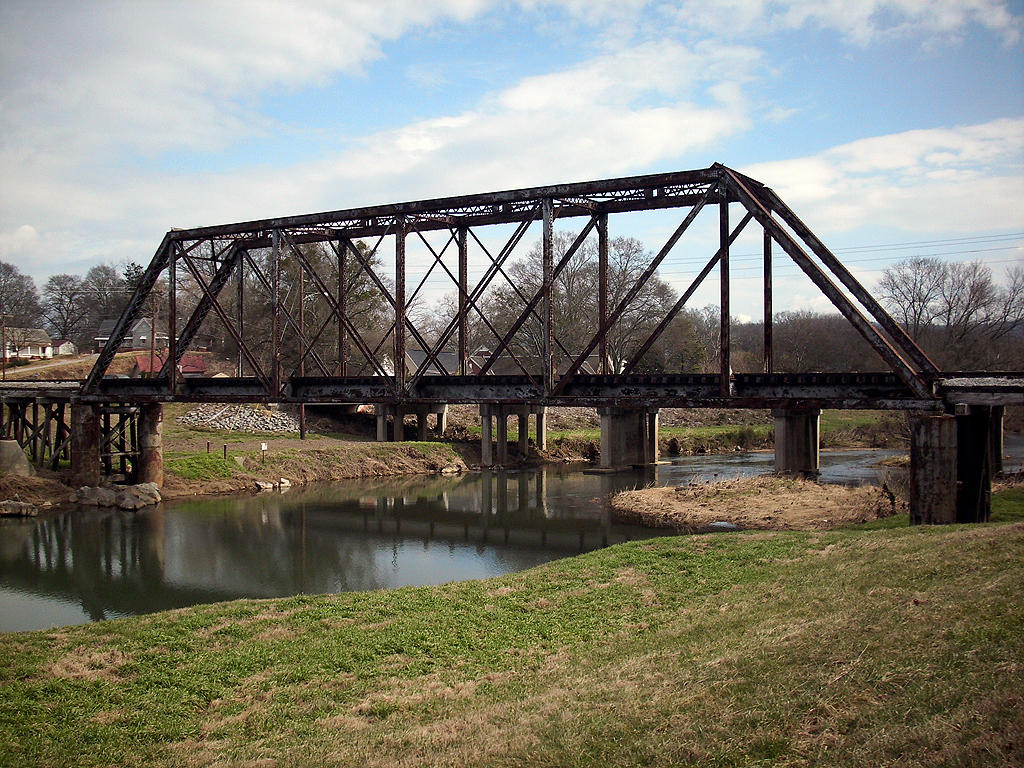Photo Credit: Eddie Douthitt, Bridgehunter.com
A vital piece of Chattooga County’s industrial landscape, the Chattooga River Bridge carrying the Chattooga & Chickamauga Railway (CCKY) line in Trion, is earning recognition as likely the oldest standing bridge in the county, a testament to late 19th-century American engineering.
Built around 1888 to accommodate the newly opened railway line, the sturdy steel structure has continuously served thousands of heavy freight crossings for more than 135 years.
The bridge, located over the Chattooga River, is a prime example of a Pratt through truss bridge—a design renowned for its efficiency and durability, which became standard for railroad applications during the industrial expansion era.
An Enduring Iron Design
Originally constructed for the Central of Georgia Railroad, the Chattooga River Bridge utilizes the classic Pratt truss pattern, an engineering blueprint that maximizes strength while minimizing material. The design features vertical members that carry compressive (pushing) loads and diagonal members that bear tensile (pulling) loads, forming a series of stable triangles.
Because it is a “through” truss design, the railway deck runs inside the main framework, allowing the entire structural system—the web of crisscrossing steel—to be visible and bear the load of passing trains.
A Vanishing Piece of History
While the Pratt truss design was once ubiquitous across the country, bridges of this specific vintage are increasingly rare. The Chattooga River Bridge’s historical value is magnified by its scarcity across the state.
According to data compiled in a Historic American Engineering Record (HAER) report, the structure is one of only 41 documented Pratt through truss bridges remaining in Georgia. Many bridges of similar age and design have been replaced or retired due to increased traffic demands or age-related decay.
The Georgia Department of Transportation (GDOT) regularly conducts historic bridge surveys to track the status of these eligible historic structures, recognizing their importance both as engineering marvels and cultural landmarks.
Today, the bridge remains a critical artery for the Chattooga & Chickamauga Railway, which now operates the historic line. The steel span serves as a visible, physical link to Trion’s earliest days of industrial growth.
As it approaches its 140th anniversary, the Chattooga River Bridge remains a powerful reminder of a time when robust, well-engineered infrastructure was literally woven into the fabric of Northwest Georgia.








Comments